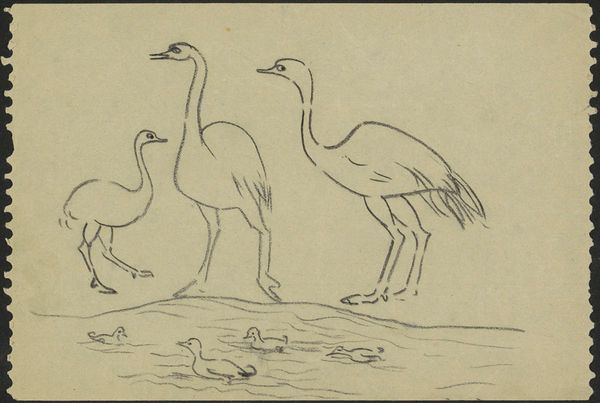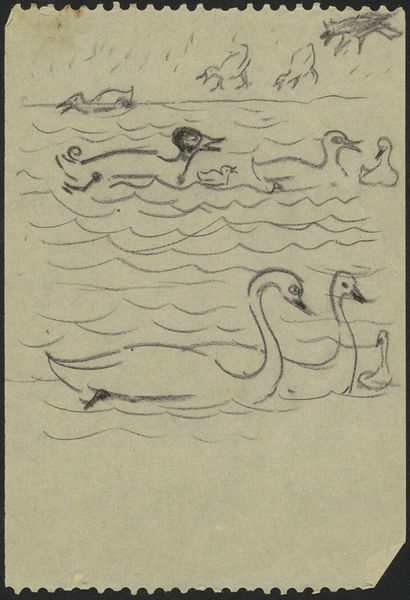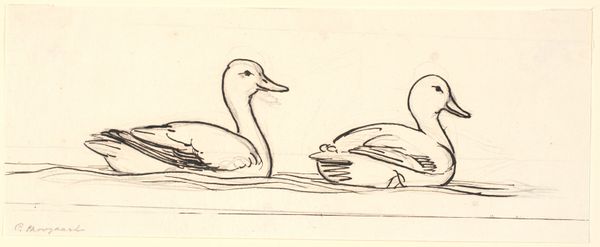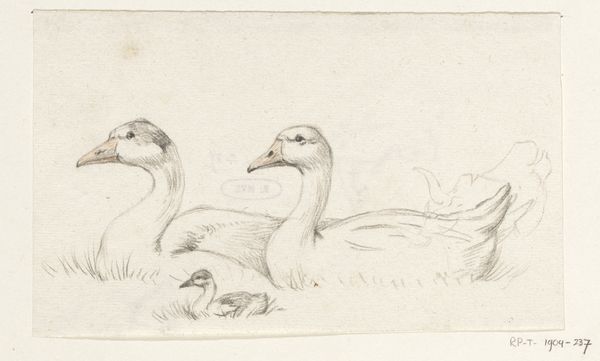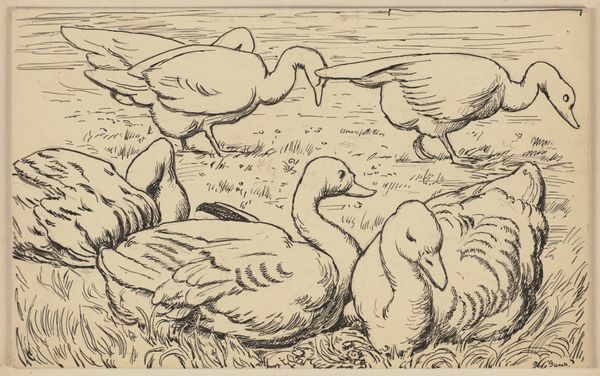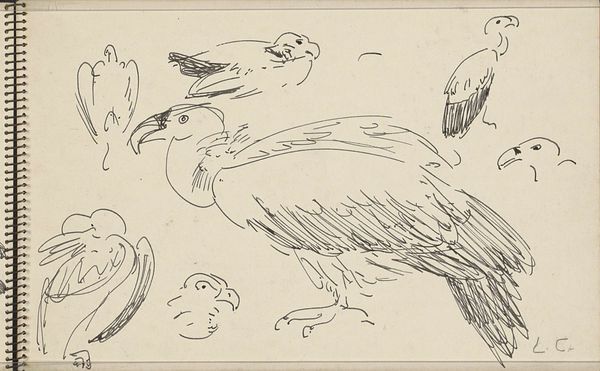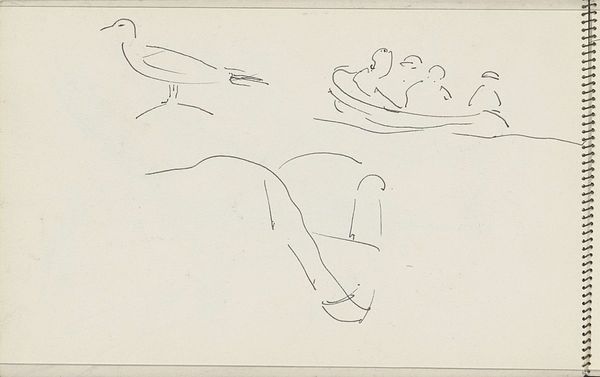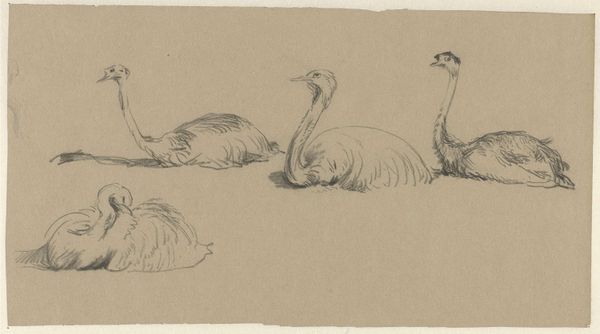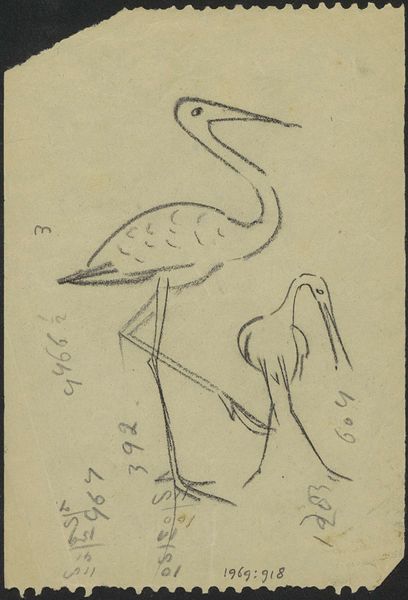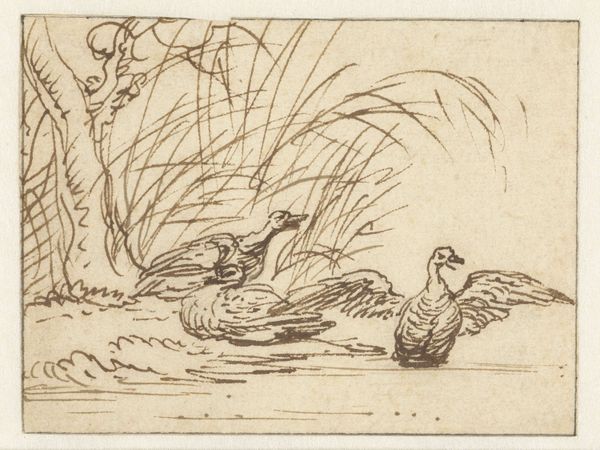
drawing, paper, ink
#
drawing
#
landscape
#
figuration
#
paper
#
ink
#
line
Dimensions: height 124 mm, width 181 mm
Copyright: Rijks Museum: Open Domain
Editor: So, here we have Gerrit Willem Dijsselhof's "Watervogels," or "Waterbirds," made with ink on paper sometime between 1904 and 1906. It's a relatively simple drawing, but there's something captivating about its quiet depiction of birds in their natural habitat. What stands out to you about this work? Curator: What immediately catches my eye is its aesthetic connection to the emerging conservation movement of the early 20th century. Dijsselhof, though known for his decorative arts, seems here to engage with a broader societal interest in naturalism. Do you notice how the linework, while economical, still manages to convey a sense of specific bird types and their behaviors? This kind of observation aligns with the burgeoning field of ornithology and its popularization. Editor: I hadn’t considered that connection! I was just thinking about it being a nice drawing. But, were artists intentionally creating works to support conservation efforts back then? Curator: It’s more nuanced than that. While some artists were directly involved in activist circles, many more contributed to a shifting cultural sensibility that valued the natural world. Images like Dijsselhof's "Watervogels" subtly reinforced the beauty and importance of these creatures, contributing to a collective awareness that influenced public policy and opinion. Editor: So, it’s about how art can participate in cultural shifts, even without being explicitly political? It’s less about posters and more about subtle influence. Curator: Exactly! Art galleries and museums themselves play a critical role by framing and displaying nature and society. They have a role in shaping the discourse around conservation. Editor: That’s fascinating. I’ll definitely look at similar works with that in mind. Thanks! Curator: Likewise! It's been insightful examining how a seemingly simple drawing resonates with broader historical movements.
Comments
No comments
Be the first to comment and join the conversation on the ultimate creative platform.
